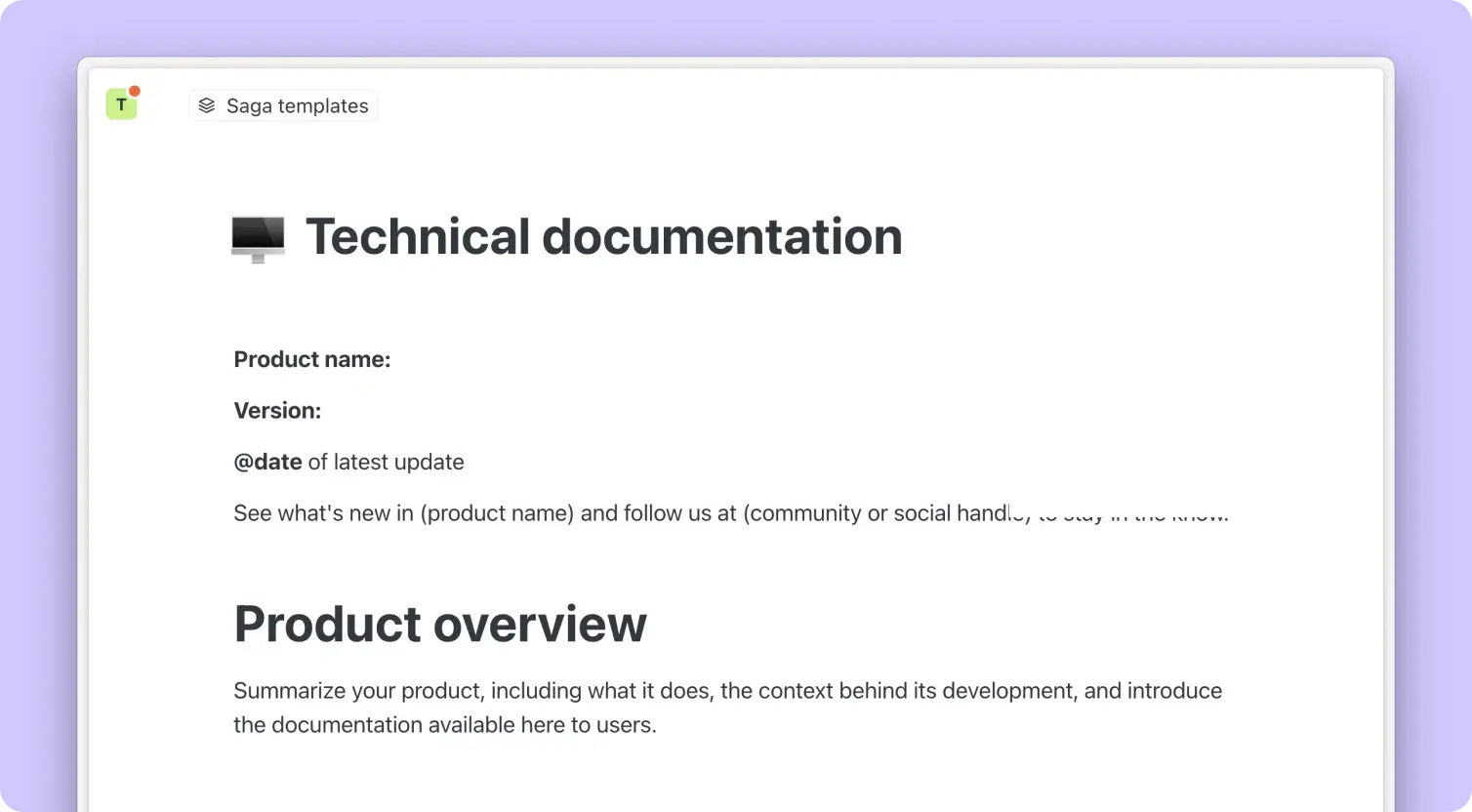Technical documentation

What is a technical documentation?
Technical documentation refers to any document that explains the use, functionality, creation, or architecture of a product. It’s a broad term that can include everything from user manuals, system architecture designs, to API documentation and test plans. It serves as a detailed guide for users, developers, and stakeholders to understand and work with the product effectively.
Unlike general documentation, technical documentation is more focused on providing clear and concise information that is crucial for understanding a product’s technical aspects. It is designed to be informative, enabling users to solve problems or understand complex systems without external help.
Technical documentation is essential for ensuring that everyone involved in the development, use, or maintenance of a product has a common understanding of how it works. This document is vital for both new and existing projects, acting as a reference that guides users and contributors.
Benefits of technical documentation
Creating technical documentation offers numerous benefits, enhancing the project’s success and efficiency. It facilitates better understanding and usability of the product, reducing the learning curve for new users or developers. By providing clear instructions and information, it significantly decreases the need for support, saving time and resources.
For developers and contributors, technical documentation is a valuable resource that helps with the development process, ensuring consistency and quality. It serves as a reference point for project standards, guidelines, and technical specifications, promoting best practices and facilitating collaboration.
Moreover, comprehensive technical documentation can improve user engagement and satisfaction by providing transparency and fostering trust in the project’s direction and quality.
How to write a technical documentation?
Writing effective technical documentation is key to ensuring that it is useful, accessible, and easy to understand. Here’s a guide to help you create detailed and helpful documentation.
1. Define your audience
Start by identifying who your documentation is for. Understanding your audience’s needs and technical background will help you tailor the content and its complexity appropriately.
2. Outline the objective and scope
Determine the objective and scope of your documentation. Decide what aspects of the product or project need to be covered, for which purposes, and to what extent. This helps in organizing the content and ensuring completeness.
3. Use a clear structure
Organize your documentation with a clear and logical structure. Use headings, subheadings, bullet points, and numbered lists to break down information, making it easier to follow and understand.
4. Include examples and diagrams
Wherever possible, include examples, diagrams, or screenshots to illustrate complex points. Visual aids can significantly enhance comprehension and retention of information.
5. Review and update regularly
Technical documentation should be a living document that is reviewed and updated regularly, at every new product or version release. This ensures that it remains accurate and relevant, reflecting any changes or updates.
6. Encourage feedback
Invite feedback from users and contributors to improve the documentation. This can help identify gaps, unclear sections, or areas that need more detail.
Following these steps will help you create technical documentation that is not only informative but also engaging, making it an invaluable resource for your project.
Free template for technical documentation
To help you with creating technical documentation, we offer a free template that is customizable to fit your project’s needs. This template provides a structured approach to documenting your product or project, ensuring that all relevant information is covered and presented clearly.
Get started
Then click on "Copy Page" to duplicate it in your workspace.


